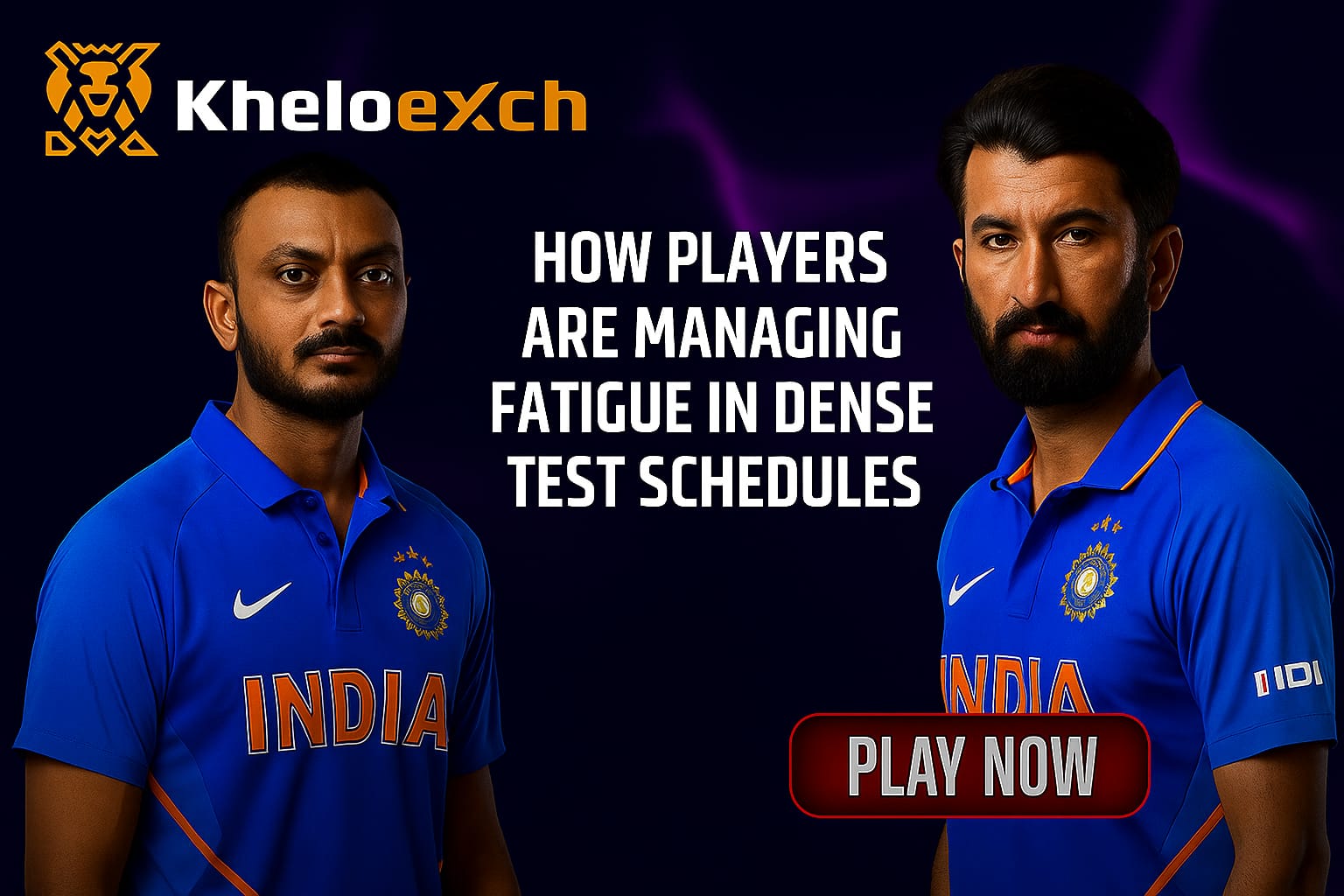How Players Are Managing Fatigue in Dense Test Schedules

In the modern era of cricket, the game has become a year-round commitment. Test matches, ODIs, T20Is, franchise leagues, and travel-heavy tours leave very little room for rest and recovery. Among all formats, Test cricket remains the most demanding, both physically and mentally. With increasingly dense Test schedules, managing player fatigue has become a critical factor in sustaining peak performance and longevity.
From mental wellness protocols to advanced fitness strategies, players today are adopting new approaches to handle the stress that comes with packed calendars. As the sport continues to evolve, so must the methods by which athletes maintain their sharpness and resilience across five-day contests.
The Rise of Dense Test Schedules
Historically, cricketers had more downtime between matches. But now, bilateral Test series often follow one another in quick succession, sometimes just days apart. Global tournaments, ICC Test Championship fixtures, and commercial demands have led to a congested international calendar, especially for nations like India, England, and Australia.
The 2023–25 ICC World Test Championship cycle, for instance, includes tight travel windows and high-stakes series that push players physically and emotionally. The challenge isn’t just playing—it’s sustaining performance repeatedly at the highest level.
Physical Fatigue: More Than Just Sore Muscles
Test cricket isn’t just about skills—it’s about endurance. Batting for hours, fielding for full days, or bowling long spells over multiple innings can take a toll on the body. Fatigue leads to muscle strain, joint stiffness, and an increased risk of injury.
To combat this, teams have ramped up their strength and conditioning programs. Personalized fitness regimes, mobility training, and physiotherapy sessions are part of a player’s daily routine now. Fast bowlers, in particular, follow strict workload management, often resting between games or series.
Recovery tools like ice baths, compression gear, cryotherapy, and massage therapy are regularly used to speed up muscle healing. Nutrition is also monitored closely, ensuring players get the right balance of proteins, carbs, and electrolytes before, during, and after matches.
Mental Fatigue: The Silent Strain
While physical exhaustion is visible and measurable, mental fatigue is harder to detect—but just as damaging. The emotional intensity of Test cricket—especially in closely contested series—can be draining. Constant travel, media pressure, and the need to switch formats regularly adds to mental wear and tear.
To address this, many teams now have sports psychologists and mental conditioning coaches on board. Players are encouraged to speak openly about burnout, anxiety, and pressure. Structured mental wellness sessions help players disconnect, reset, and return focused.
Captain Ben Stokes, Virat Kohli, and Glenn Maxwell are among several cricketers who have spoken candidly about mental fatigue and taking breaks when needed. This shift in culture—where mental health is prioritized alongside physical fitness—is a vital step forward in modern cricket.
Rotational Policy: A Necessary Evolution
One of the most visible ways teams manage fatigue is through rotation policies. Instead of playing the same XI across formats or even every Test in a series, selectors now opt to rotate bowlers, rest key players, and give opportunities to younger squad members.
India, under recent leadership, has employed this strategy well—resting top players like Jasprit Bumrah, Mohammed Shami, or Ravindra Jadeja when needed. England has done the same with James Anderson and Stuart Broad. While this can occasionally disrupt continuity, it ensures player health and performance longevity.
Such a policy reflects a long-term vision, especially with World Test Championship points on the line and major tournaments always around the corner.
Tech-Driven Recovery and Monitoring
Technology is also playing a crucial role. Today’s players wear fitness trackers and GPS vests that monitor movement, workload, and heart rate. Coaches and physios use this data to measure fatigue, optimize training loads, and avoid overexertion.
Sleep patterns are tracked, hydration levels are tested, and even stress markers are analyzed through wearables. These insights help support staff design custom recovery plans, giving players exactly what their body needs between Tests.
Balancing Rest With Rhythm
One of the challenges in managing fatigue is striking the right balance between rest and match rhythm. A long break can lead to rustiness, especially for batters who rely on timing and reflexes. That’s why rest days are often combined with light training, visualization exercises, or optional net sessions.
Some players, like Joe Root and Steve Smith, choose to simulate match conditions even on rest days—facing throwdowns or shadow batting to stay mentally engaged without draining energy.
Lifestyle Discipline Off the Field
Managing fatigue is not just about what happens at the ground. Sleep, diet, hydration, and personal lifestyle choices all play a role. Most international cricketers now follow strict daily routines, even on travel days. Avoiding late nights, limiting screen time, and maintaining a balanced mental space through reading, meditation, or hobbies help players stay mentally sharp.
Veterans like Virat Kohli have set benchmarks in lifestyle discipline, often attributing their sustained performance to clean living, proper rest, and focused routines.
Conclusion: A Demanding Era Requires Smarter Management
Cricket is no longer just a game of skill—it’s a game of sustained excellence in high-pressure environments. With dense Test schedules becoming the norm, players are rethinking how they prepare, rest, and recover.
Whether it’s through rotation, sports science, Kheloexch,mental wellness support, or technological insights, today’s cricketers are adapting to the demands of the modern calendar. The future of Test cricket doesn’t just rest on talent—it depends on how well that talent is preserved, protected, and prepared.
As teams around the world look to maintain Kheloexch App Download intensity through long seasons, fatigue management isn’t just a medical concern—it’s a competitive advantage.





